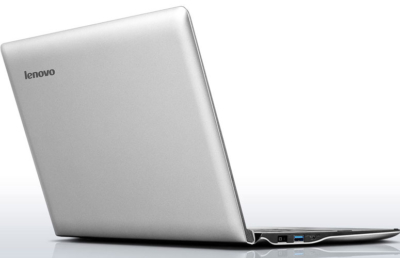For the time-poor retro gamer, the temptation to convince yourself that a new, possibly portable, machine will allow you the opportunity to play all of those games that you always planned get around to, is significant. It’s the same mindset that makes those with already considerable backlogs buy more games: without the time to play, reading up on a product and making a purchase is one way to remain engaged with your hobby.
By my usually profligate standards, I’ve remained relatively restrained: I own a PSP but never dared to fiddle around with it to use it for emulation, although I have bought one or two retro collections that have remained largely untouched. As I was never a console gamer, what I always wanted was a device to let me play PC games (including those I could review here) without sitting in front of my main desktop machine. One misguided investment was an Android tablet which, even when combined with a paid DOSBox app and Bluetooth keyboard, fell short of expectations. (I did manage to use it for some adventure games, though, either via ScummVM or purchased from the Google Play store).
The solution for someone in that situation seems obvious: a Windows laptop. In truth I’ve historically been a bit anti-laptop: I always preferred a desktop setup, and reasoned that using a laptop for games would always be a compromised experience, plus when batteries and other things went wrong with them, they would be problems you wouldn’t be able to resolve yourself. And they seemed a little bit expensive: as someone whose upgrade budget and schedule normally stretches to around £500 on a new desktop PC every 5 years or so, a second machine seemed a bit extravagant, not to mention the fact I don’t like carrying too much valuable kit around with me (I once met a friend in a pub and he had some expensive Macbook with him: I just couldn’t carry around a grand’s worth of machine around with me – worrying about losing or damaging it, or it getting nicked).
Somehow, though, a few years ago I ended up with one: a combination of a Black Friday sale and the accidental overconsumption of beer while waiting for an extremely delayed Indian takeaway delivery meant that I awoke the following morning with a confirmation email from Argos telling me my new computer could be collected from our nearest branch (which, it turns out, wasn’t that near). I’d been in a similar position before, ordering a PSP Vita from Amazon Germany under similar circumstances for £100 (a bargain, in retrospect), but cancelling the following day. The same option was open to me this time, but I decided to go through with it. In the cold light of day, a Windows laptop for £125 was still a good deal.
As you might guess, for that price, you don’t get a particularly high quality laptop. It’s a Lenovo s21e which, as a budget model, suffers from slightly shoddy build quality and limited storage space, to name but a couple of drawbacks. The display is also pretty small and it’s not at all powerful. But, I realised that now that I’m a dusty old out-of-date gamer, anything that could run 64-bit Windows would probably be powerful enough for DOSBox, AGS point and click adventures and sundry other GOG purchases from the 90s and early mid-00s. Plus I could get some writing up done if needed too.
Knowing me, and the nature of such optimistic purchases, there was still a chance it would have laid untouched in my computer cave, but in fact it’s revitalised my FFG output over the past few years. I won’t pretend I’m not still intrigued when I hear about some new and exciting options for gaming on the move, and a laptop does have its limits (although I feel comfortable playing old adventures, I’m not sure I’m brave enough to break out the USB joypads on the 7:29 commuter train) but for now I think I’ve found my portable retro machine of choice.




 Posts
Posts
I’m glad to see a humble little laptop has been so useful for you! I’ve made a few purchases that were at least partially inspired by retro-gaming goals, but have been sadly under-used.
There was the JXD-8700D tablet, basically an android with a gamepad build in.. It’s actually great for 8 and 16 bit console stuff but is never going to be ideal for PC games.
I also have a Raspberry PI still gathering dust in a drawer. That could probably handle dosbox decently if I ever took the time to set it up.
August 30, 2018 @ 3:35 pm
I got myself an ASUS ROG (republic of gamers) laptop with an M960 geforce card, and could play all kinds of indie games and for sure emulation of older home computers or consoles was no biggie. The real jewel came later when i bought myself an MSI laptop with RGB backlight (not needed but neat) and a 2080 RTX card. Man Nvidia was not lying when it said a laptop with 2080 can outperform next gen consoles…. Unless ofcourse that console has an 2080 build in (xbox series x)
I am really blown away how every game i normally would deinstall from my old laptop because they run so bad, now can run with everything on ultra and still have 60 fps (1080p is enough for me). Now the itch of playing my steam library that i neglected because of a less powerfull computer is waiting for me to play through. Will i be able to resist buying new games hahaha (hysterical laughter while seeing i have 1500+ games on steam alone…)
February 27, 2020 @ 1:00 am